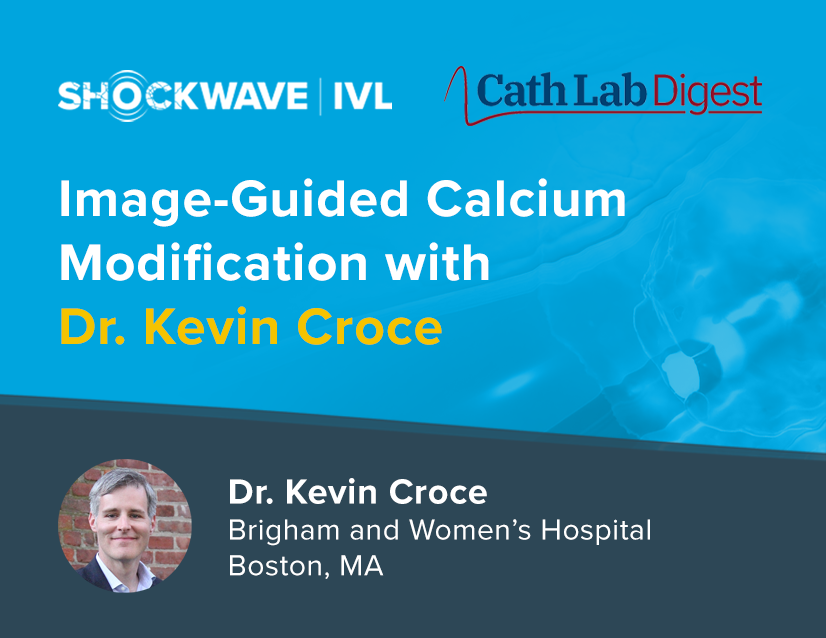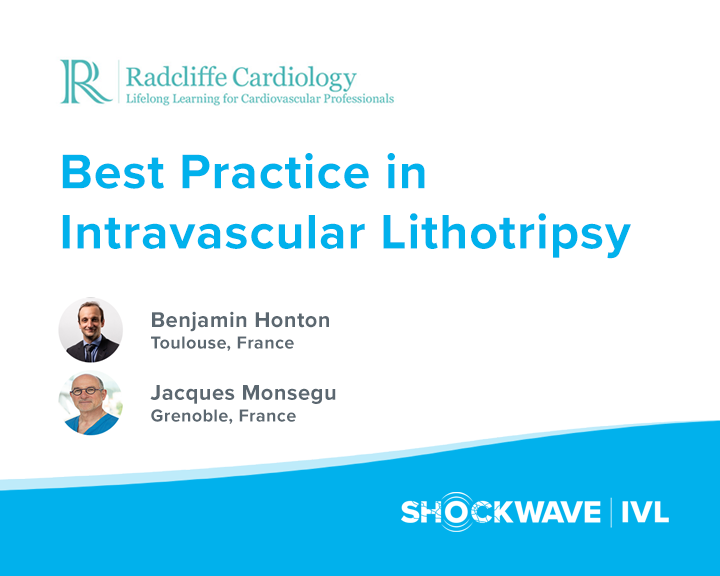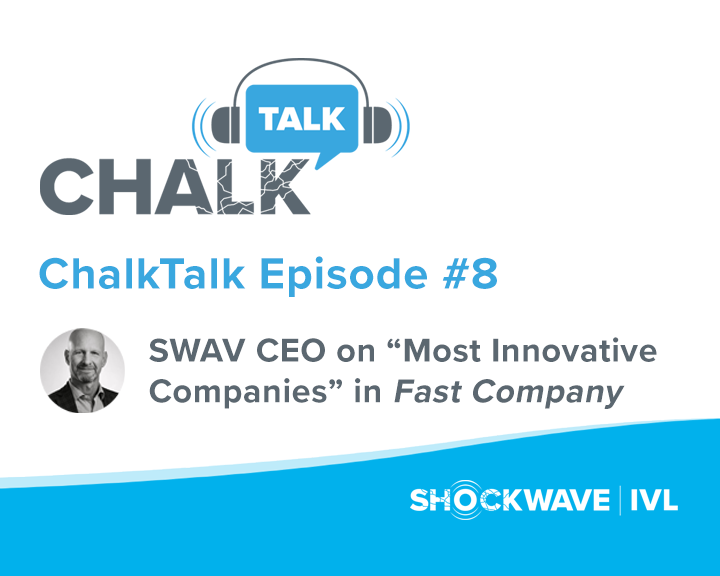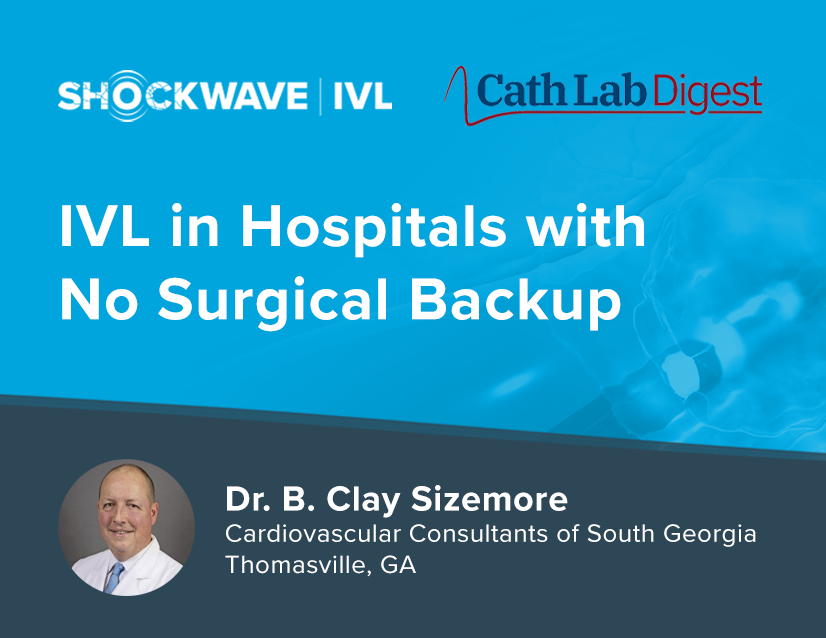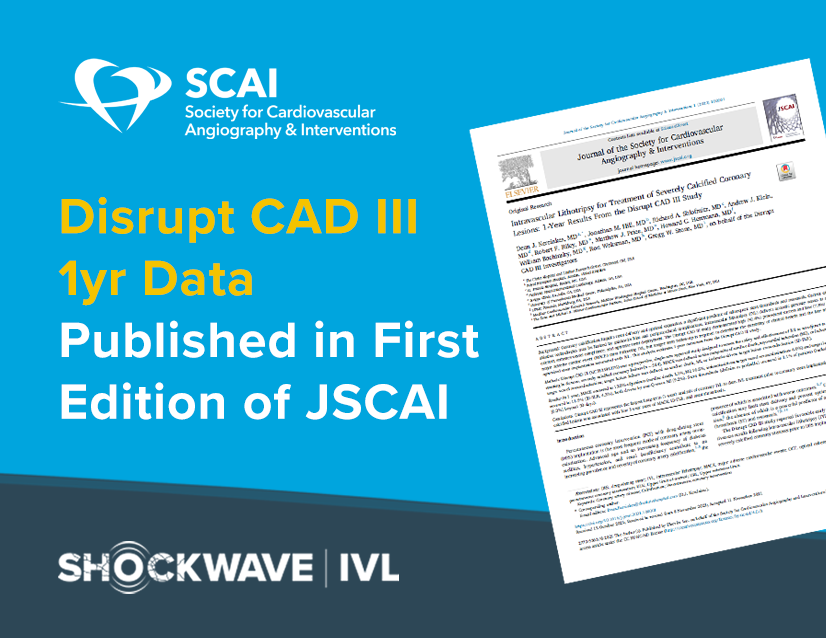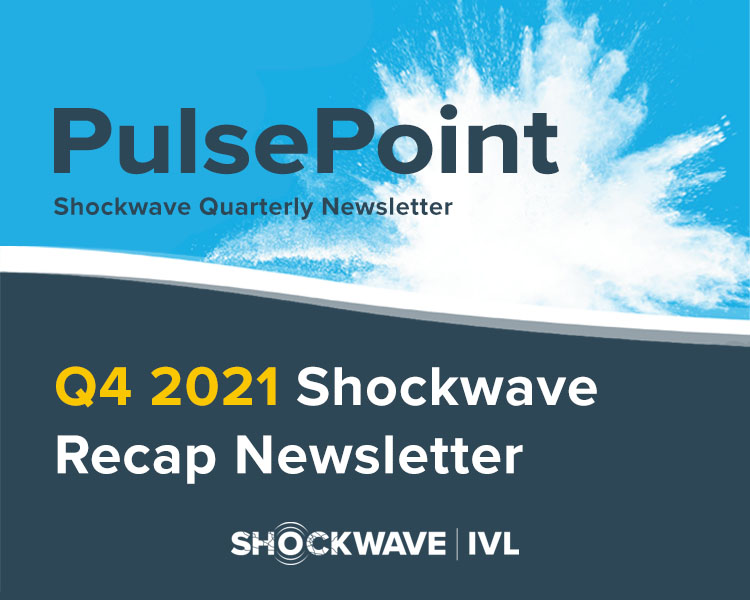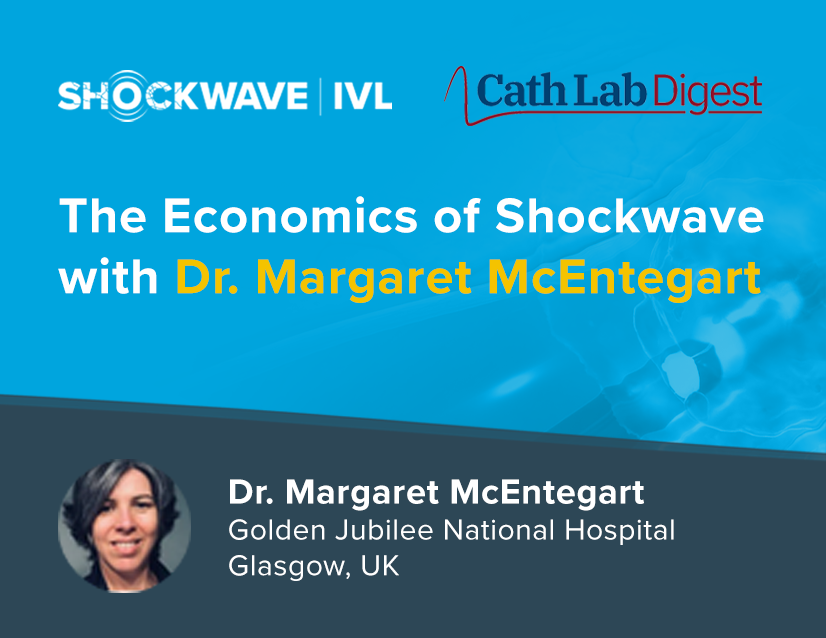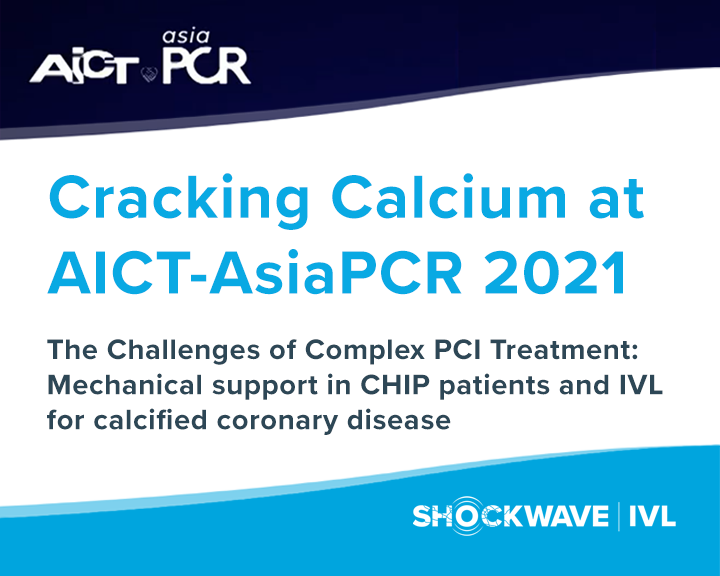Dr. Kevin Croce, Director of Chronic Total Occlusion (CTO)/Complex PCI Program, Interventional Cardiologist, Brigham and Women’s Hospital, Assistant Professor of Medicine, Harvard Medical School, Boston Massachusetts talks about the importance of image guided plaque modification in optimizing PCI, discusses the role of IVL in calcium modification and share his insights on Coronary IVL in different calcium morphologies.
Read More
Topics:
Coronary IVL,
Shockwave C2,
Calcium Corner
Dr. Benjamin Honton, Interventional Cardiologist at Clinique Pasteur, Toulouse, France, together with Dr. Jacques Monsegu, Groupe Hospitalier Mutualiste de Grenoble, France, write about best practices for IVL use in the cath lab based on his 3 years of experience with the technology. In this review you will find IVL technical, scientific and clinical overview, such as lesion selection with focus on concentric and eccentric calcification, analysis of specific clinical indications and some useful tips for crossing and therapy delivery.
Read More
Topics:
Coronary IVL,
IVL Technology,
Shockwave C2,
Treating Different Ca++ Morphologies
Based on Shockwave’s recognition on Fast Company’s 2022 list of the World’s Most Innovative Companies in the medical device sector for “bringing good vibrations to heart procedures,” we sat down with Shockwave CEO Doug Godshall for a Q&A to discuss how innovation is fostered at SWAV and why continual innovation is imperative to the future success of the company.
You can also read more about the honor in the company’s press release, in which Doug is quoted saying, “Shockwave Medical was founded with innovation at our core…not only for pioneering revolutionary and proprietary IVL technology, but also for the ways that innovation permeates every aspect of our business. We are continually evolving and transforming how we do things as we seek to astound our customers with life changing products for the treatment of calcified cardiovascular disease.”
Read More
Topics:
Coronary IVL,
Peripheral IVL,
IVL Technology,
SWAV News,
ChalkTalk Podcast
Dr. B. Clay Sizemore, Interventional Cardiologist at Cardiovascular Consultants of South Georgia, Thomasville, GA speaks about his experience with coronary IVL in a no surgical backup hospital, discussing his patient selection criteria, importance of same day discharge and how IVL fits well into this strategy, thereby allowing the treatment of previously undilatable calcified lesions and minimizing the risk of patient transfer and procedure staging.
Read More
Topics:
Coronary IVL,
Shockwave C2,
Calcium Corner
Disrupt CAD Pooled Gender Analysis is now in published in JSCAI - the new journal of the Society for Cardiovascular Angiography & Interventions. Read the JSCAI publication here: https://www.jscai.org/article/S2772-9303(21)00011-9/fulltext
Read More
Topics:
Coronary IVL,
IVL Technology,
Coronary Clinical Data,
Shockwave C2,
Female vs. Male Outcomes
The one-year Disrupt CAD III data has been published in JSCAI – the new journal of the Society for Cardiovascular Angiography & Interventions. The new data from Disrupt CAD III confirm the consistency of the excellent safety and effectiveness outcomes at 30 days out to one year.
Read More
Topics:
Coronary IVL,
IVL Technology,
Coronary Clinical Data,
Shockwave C2
2021 was Shockwave’s best year yet! Although it brought challenges, with it came immense opportunities which allowed us to grow and exceed expectations. As we push on into 2022, we are excited for what the year will bring but most importantly, for the opportunities to continue to help improve patient outcomes across the globe. But before we get started, let’s review the highlights of last quarter. We released four data releases, including our 1-year results of our Coronary IVL pivotal study at TCT this year, making it a monumental event. We had some exciting peer-reviewed publications come out, enrolled the first patient in the Disrupt BTK II Study, and much more. Read the latest PulsePoint for all the updates!
Read More
Topics:
Coronary IVL,
Peripheral IVL,
IVL Technology,
PulsePoint Newsletter
Alternative access strategies in TAVI are prone to higher complication rates when compared to transfemoral access. This leads to the question; should physicians tackle difficult transfemoral over alternative access?
Read More
Topics:
Peripheral IVL,
Peripheral Conferences,
Peripheral Clinical Data
Dr. Margaret McEntegart, Consultant Interventional Cardiologist at West of Scotland Heart and Lung Centre, Golden Jubilee National Hospital and Honorary Associate Clinical Professor, University of Glasgow, Glasgow, United Kingdom speaks about her experience with coronary IVL including practice-changing findings from her research comparing costs and resource utilization of rotational atherectomy vs. coronary Intravascular Lithotripsy.
Read More
Topics:
Coronary IVL,
Shockwave C2,
Calcium Corner
For the first time, Shockwave Medical participated in ASIA-PCR, which was entirely virtual because of the ongoing COVID-19 pandemic. Watch our joint symposium with Abiomed entitled: “THE CHALLENGES OF COMPLEX PCI TREATMENT: Mechanical support in CHIP patients and IVL for calcified coronary disease”.
Read More
Topics:
Coronary IVL,
IVL Technology,
Shockwave C2
